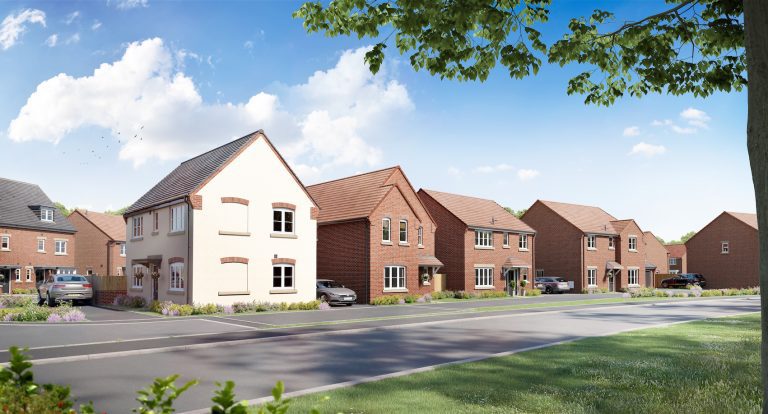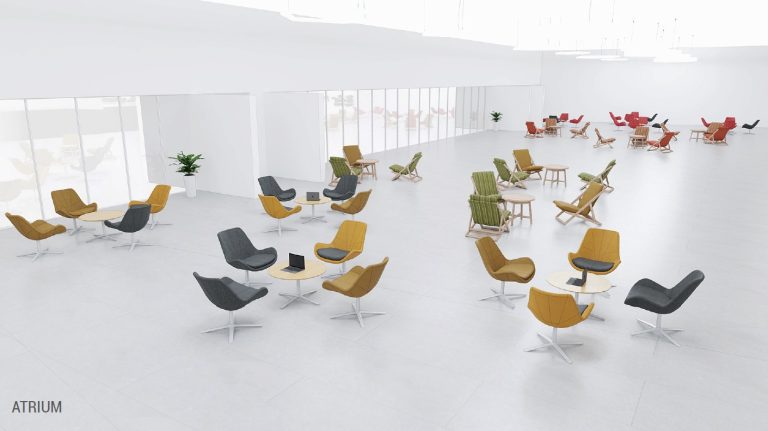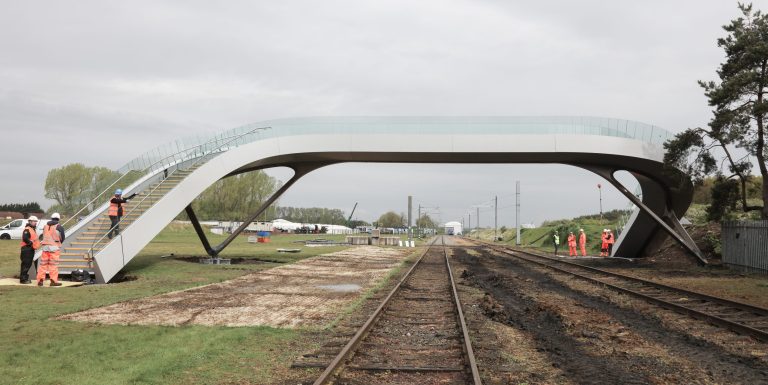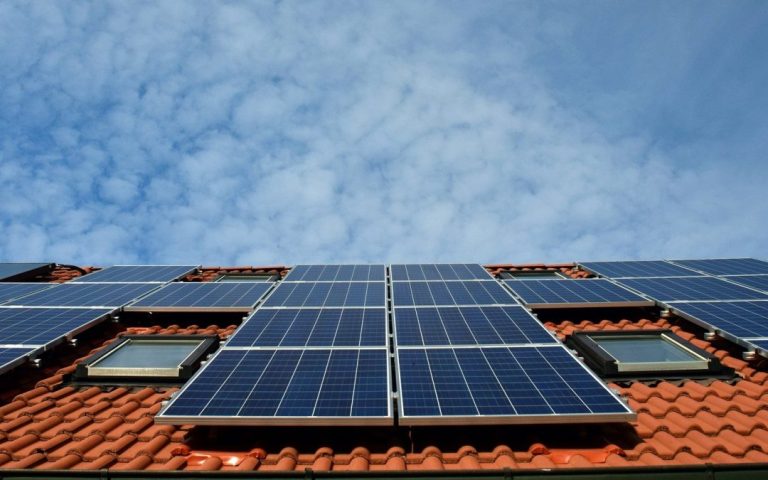UK-based bridge design experts, Knight Architects, alongside a world-leading team of experts, reveal their innovative rail design for Network Rail’s ‘Flow’ Bridge; an innovative modular bridge which will have a wide range of applications across the network, including as a replacement to level-crossings. The new design builds upon Network Rail’s expanding catalogue of signature footbridges and follows their ‘Principles of Good Design’. The ‘Flow’ Bridge is designed in high-strength composite materials, providing freedom in design and cost effectiveness, amongst numerous other benefits. Knight Architects were appointed to develop a concept design in Spring 2020, and have developed the design almost entirely remotely with Network Rail, Jacobs, Flo Flo, KS Composites, Sui Generis, Q-Railing, Rapid Root, Epsilon Optics, Sentry Systems and Mabey Bridge. Using Composite Materials Knight Architects’ ‘Flow’ Bridge design uses modern composite materials which have numerous benefits – they are light weight, cost-effective, and strong. They also offer a great deal of freedom in design – a wide-range of forms are achievable. Given this flexibility, the team wanted to develop a solution which significantly enhanced the user experience of crossing the railway, starting first by thinking about people using the bridges, rather than the objects themselves. This approach is echoed in Network Rail’s ‘Principles of Good Design’ which set out the ambitions for new structures across the network. People First Design Network Rail’s bridges play a vital role as part of a holistic end-to-end passenger journey. They have to provide a safe crossing of the tracks, yet often the safety and security requirements of the railway can lead to bridges which are unwelcoming, and are seen as a negative part of the journey. Knight Architects subsequently developed the ‘Flow’ Bridge concept, alongside the rest of the team, to focus on greatly improved user experience. It is designed to meet the required standards, whilst also creating a welcoming, enjoyable, and safe crossing for all. Key Aspects of the Innovative Rail Design The Corner – Traditionally, ramps and stairs are positioned at 90 degrees to the main span which when combined with high-containment parapets creates a ‘blind corner’ to turn around. This creates an uncomfortable moment for users, unable to see who or what is around the corner. Smoothing this corner out is important, as it creates a much safer, more welcoming user experience. However, doing so can lengthen the bridge, pushing the stairs/ramps away from the rail fence line and clearance envelope. This increases the cost, material use, and the land required for crossings. The ‘Flow’ Bridge resolves this with the addition of a structural ‘spine’. Whilst the deck turns smoothly around the corner, the supporting spine remains orthogonally aligned to the railway. This ‘disconnect’ between spine and deck allows the deck to ‘flow’ around the corner, whilst maintaining a minimalistic structural footprint. The addition of a spine also unlocks other benefits. On site, it allows deck modules to be lifted in incrementally, allowing for smaller, more manageable components to be transported and installed, or even replaced if necessary. It provides rigidity between deck modules, resulting in more refined connections, and allows precise connection to the concrete-free ‘Rapid-Root’ foundation system. The Parapet – The containment requirements of the railway often lead to solid, tall parapets, which create an oppressive, tunnel-like experience. The view from the structure is restricted, and the resulting enclosed space being poorly overlooked can even feel unsafe. In response to this, the team wanted to return bridges to being enjoyable ‘moments’ within a walk, opportunities to take in a new view, a vantage point from which to experience the surrounding environment. But this is also about safety – the view of the bridge is also opened up, and with more visibility of who is on the bridge, people can see their entire route before they embark upon it. Knowing that they can be seen on the bridge will make people feel safer when using it. Opening up these views requires transparency, and so a glazed parapet system has been developed. At low level the composite material extends up above the deck, but only as far as is necessary from a structural standpoint. Beyond this, the containment is achieved through laminated frameless glazing, held by an aluminium channel; a system designed by Q-Railing. The glazed element is one of the ‘variables’ of the scheme, with a multitude of options available to suit all site conditions. For example, a layered glass/composite solution has been developed to improve the glazing durability in sites particularly prone to vandalism. Modular Aesthetics of the Innovative Rail It is essential that any modular solution carefully considers the identity of the railway and also the identity of the specific sites in which the bridges will sit. Local stakeholders often view standardised solutions as insufficient, utilitarian and inward-looking – focusing only on the requirements of the rail, often at the expense of local objectives. The ‘Flow’ Bridges are inherently outward-looking. The crossings are designed to be assets within their communities, with each design taken as an opportunity to provide a beneficial, tangible link between the railway and the people which surround it. One of the key challenges for any ‘standard’ bridge solution is how one design can ‘fit’ a variety of sites. Standardisation is driven by consistency and repetition, yet good design traditionally seen as a specific response to context. The ‘Flow’ Bridge addresses this with contemporary, refined forms paired with careful detailing and a ‘human-scale’, all driven through enhancing the user experience. The aim is to ensure that even the ‘base’ design offers an attractive, fitting and welcomed addition to new sites. To respond to the specific characteristics of a site, the system offers a wide-variety of configurations. These extend from geometric adaptability such as altering the span or width of the deck, through to texture, pattern and colour modifications all of which are readily achievable with composites. Whilst the current prototype has been built as a stair-only version, the completed system will be capable of offering accessible crossing with the addition of ramps













